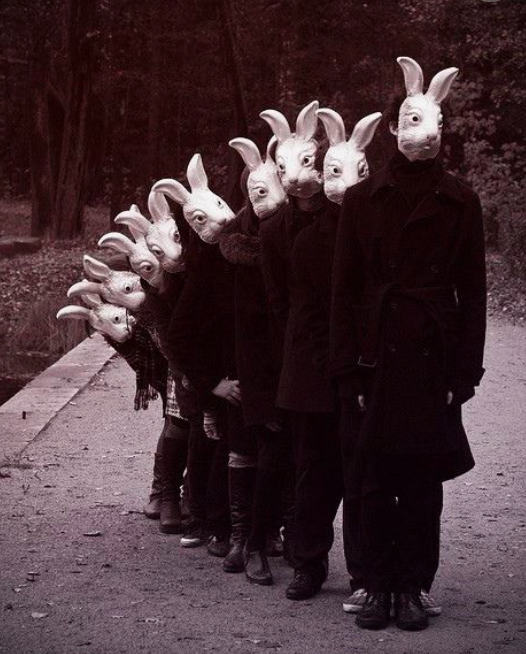Pop Ups and the Destiny Strand of Things (or How to Be Fully in the Dream We’re Actually In)
Pop ups are images that specifically try to get our attention. I call them “pop ups” because of their activity—because they try to pull the dreamer’s focus—and because I don’t know what else to call them. Due to those pesky online ads that won’t leave us alone, however, some folks find a degree of difficulty getting past the name “pop ups.” So go ahead and call them what you will; the point is to notice what they’re doing.
Pop ups (or whatever name you settle on) are everywhere and are actually very easy to spot/see/feel once you know what you’re looking for.
In long dreams, all sorts of pop ups may occur, whereas in short dreams the entire dream is rather like a pop up.
The Dreamtime, I contend, is trying to teach dreamers that images—both waking and dreaming—are trying to get our attention.
By noticing pop ups we develop our noticing capacities.


Developing our noticing capacities helps us to stay present to what I call “the dream we’re actually in.”
With patience and practice, staying present to the dream we’re actually in develops our powers of attention to the point of being able to notice what’s coming into being now, and now, and now . . . .
The shiny quality of pop-ups has to do with trying to get dreamers attention, with trying to get dreamers to notice them.
This has everything to do with the light of the images’ being, the light of pop ups and is similar, therefore, to the way that certain people have a lot of light in their being, so long as “light” is not imagined literally.

Pop-ups reveal the matrix of the dream, and of the world. Paying attention to pop ups therefore gives us a kind of map of things and, at the same time, help us to navigate.
Try not to let yourself become too distracted by the content of pop-up images; focusing too much attention on the content of images takes us down the rabbit hole and away from the activity of dreams. It seems that what pop-ups want, almost exclusively, is that we notice the activity of “popping up,” which reminds me of that line from one of Rumi’s poem:

The miracle of Jesus is himself,
not what he said or did
about the future.
Forget the future.
I’d worship someone
who could do that.
Somewhat surprisingly, pop ups are not personal. In other words, it turns out that pop ups objectively pop up.This is nevermore dramatically revealed than when tending dreams in groups. Everyone listening to a particular dream will notice precisely the same pop ups. If we allow this revelation to fully penetrate, the implications are utterly STAGGERING.
Pop-ups, like all images, are entirely dependent on our attention—which is the activity of tending the images, of caring for them and the presences behind them.
Tending dreams means that when images are entrusted to our care we agree to look after them.
Sometimes these images are given to us directly (in both our own sleeping and waking-world dreams) and sometimes dreamers offer them into our tender care and attention.
If we imagine, as I am suggesting, that everything is dreaming all the time, then part of the task of being human is noticing pop-ups.


The adherence to a psychological past is completely dead—the only living aspect, with regard to looking back over our shoulder to the past, has to do with pop-ups.
Pop ups try to get our attention in order to orient us toward the destiny, coming-into-being, strand of things.
Sometimes things get doubled up in obvious ways (two birds, twins, etc.) and sometimes the action of the dream gets doubled up. Even more rarely, is when what the dream is doing gets doubled up. All of this doubling up is, I suggest, for emphasis, so that we might notice and pay particular attention.

When anything gets doubled up in the dreamtime it is specifically trying to get our attention.



Recurring dreams are pop-up images that try to get our attention in insistent, almost nagging ways, as though they simply refuse to take no for an answer.

If images are indeed alive and trying to get our attention, isn’t it because the entire created world is seeking our ongoing, creative participation? By their very nature then, pop ups, seem to be trying to let us in on this open secret. I suggest, therefore, that it’s not what we do about pop-ups but rather with them, how we tend them, that matters. And it’s this central, ongoing, essential activity that makes up the art and practice of dream-centered living (which is why it’s also the subtitle to my book: Icons of a Dreaming Heart.

In the coming days, I plan to post some illustrative examples of pop ups from both sleeping and waking-world dreams. Until then, my friends, sweet dreams!
In the meantime, if you have any questions or comments regarding pops up, please don’t hesitate to send them along. As always, I’d love to hear from you.




Thank you Rene. I just put on a pair of socks that my husband bought for me that are definitely pop-ups. They are bright aqua and pink and have green tortoises on them. I am sure he thought that the tortoises were my spirit animal, a sea turtle, and did not notice that the socks are a color “I would never wear”. So, I had to laugh when I put them on, noting that I can be happy in the dream I am in. I love these socks, a gift from my beloved husband, and what’s going on with the tortoises, anyway? Thank you so much for reminding me to be in the dream I am in, and paying attention to the pop-ups, awake or dreaming!
Thank you! Love the description of these socks! It seems to me that the right question in these circumstances is: what is Tortoise asking of me? Of course we generally answer the questions we pose in this manner immediately, and usually in a fill-in-the-blank sort of way. But these answers are not to be trusted as anything other than indications of our own desire. It’s good to be made aware of what our hidden hopes are, but these are to be confused with what is being asked of us. The task therefore is to resist the temptation to imagine our fill-in-the-blank answers as “the” answer, while waiting instead with a sideways eye out for something akin to response from the presence of Tortoise and/or the Dreamtime. And then, if you would, kindly keep me posted, Annetta. I’d love to hear more, especially if you receive a response.
I believe your email arriving as it did in my inbox this week, and being about pop-ups, is itself a pop-up for me. Thank you for this. :-)
Excellent, Karen. Good to hear from you. Love when this happens. Thanks for letting me know. Meanwhile, I’m preparing a whole series of follow up posts that may find their way to your inbox with similarly significant timing. Hope so.
I had a kind of “pop-up” experience that guided me into a precious waking-world dream early last week. I was walking my dog Ralphie along a path in the park directly across from where I live. There was a thick stand of tufted saw-grass off to one side. I noticed that one of the feathery tufts seemed to be flicking randomly rather than in the same windblown motion as the others in the grass. I looked more intently at the movement and saw a young fawn feeding at its mother’s teat. Its tail was excitedly flicking up and down and side to side as it did so. After a few seconds, the doe ever so slowly and gracefully swung its right hind leg around behind the fawn’s head so as not to disturb its feeding. After a few more seconds, the doe sauntered off and the fawn, with the white spots on its haunches quite prominent, trotted after her. If I hadn’t seen the random flicking motion of the fawn’s tail (i.e., the “pop-up”?) — I probably don’t see anything of this poetic natural image. [And even though I was a “bottle baby,” – I believe I encountered my mother on her terms this time….]
Gorgeous, Bill. Yes! Thank you for this. Your mother, the fawn’s mother, and in a very real sense, The Mother, that is, Mother as Nurturer, an image of Archetypal Mother. So sweet, and healing.
Ive been having a lot of pop up in fact its the only thing I can remember after dreaming all night as we have been talking about them. It always amazes me the depth that you you pull out of such a small focus time of dream. ty laurie
You’re welcome, Laurie!
A lovely way to refer to dream symbols. Will mention you in my dream workshop on February 5, 2018, Chula Vista CA. Thank you!
Thanks, Delores. Wishing you all the best at your dream workshop in Chula Vista in February. If there is a link you want to share with us regarding your workshop, please post it. It’s always good to get the word out about dream workshops.